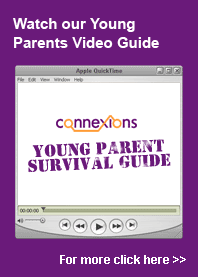Preparation: What to Expect
It's natural to be concerned about how you will cope with labour, but one of the best ways to overcome any worries you may have is to find out as much as you can beforehand.
There are several stages of labour and it helps to know what happens in each so you can recognise the signs that you are progressing.
Early labour:
This can take hours, or even days as contractions start to build up and put pressure on your cervix to thin and open up (dilate). Your body releases the hormone oxytocin to induce contractions and it has a lot of hard work to do which is physically tiring for you.
Established labour:
When your cervix is about 4cm dilated and you are having strong regular contractions you are said to be in 'established' labour. Your contractions will start to last longer - about 45 seconds - and come more frequently - every four minutes.
Transition:
This is the in-between stage between the first part of labour where the cervix is dilating and the second stage where you have to push the baby out. Some women say this is the most difficult point - they start to feel tired, panicky and overwhelmed with the enormity of the task ahead. Contractions may be really intense now with virtually no gaps in between them and you may start to feel the urge to push, although your cervix may not be fully dilated. Some women say they lose the plot at this stage and say things like 'I want to go home' or 'I can't do it'. Your labour partner can help you by offering you lots of encouragement and support. Sips of water, a cool flannel on your face or a massage may all help you, but equally you may 'go into yourself' to gather your strength and will hate any fussing.
Second stage:
Think of the second stage, which can take up to an hour, as the final count down to meeting your baby. Yes, it's painful - but the end is in sight now and your midwife will help you through it. Your contractions will become even stronger and closer together and you will get the urge to bear down and push. Each contraction will move your baby further down the birth canal and closer to being born. Towards the end, the contractions will be very intense, lasting up to a minute, with only a matter of seconds in between each one - just take them one at a time and try not think too far ahead. Eventually the baby's head will 'crown', passing through the perineum and you may feel an intense burning sensation. The best way to cope with this is to 'pant' a succession of quick, short breaths to allow the perineum to stretch and not to tear. In some cases you may tear or your midwife may want to perform a small cut - an episiotomy (this can be repaired with stitches after the birth). Once your baby's head is born he will turn to allow one shoulder to come out, followed by the other. The feeling of relief is immense and the pain stops immediately, many women also feel an intense 'high' at their achievement. Once the baby is born the cord will be clamped and cut - in some cases the new dad wants to do this - and the baby will be handed to you so that you have skin-to-skin contact if you wish. While you are being cleaned up, and given stitches if they are needed, your baby will be checked over to make sure he or she's healthy.
Third stage:
Delivery of the placenta - It's not quite over yet! The placenta (or after-birth) now has to be pushed out and in most cases this is quite straightforward. Your midwife may have given you an injection of syntometrine as your baby is being born and this speeds up delivery of the placenta (usually to within five minutes of the birth). It usually takes just a few pushes and it's out, or your midwife may gently pull the cord to help to remove it while you relax your tummy
If you opt for a natural third stage, be prepared for it to take 20 minutes or so. No injection is given and the placenta is delivered naturally.


